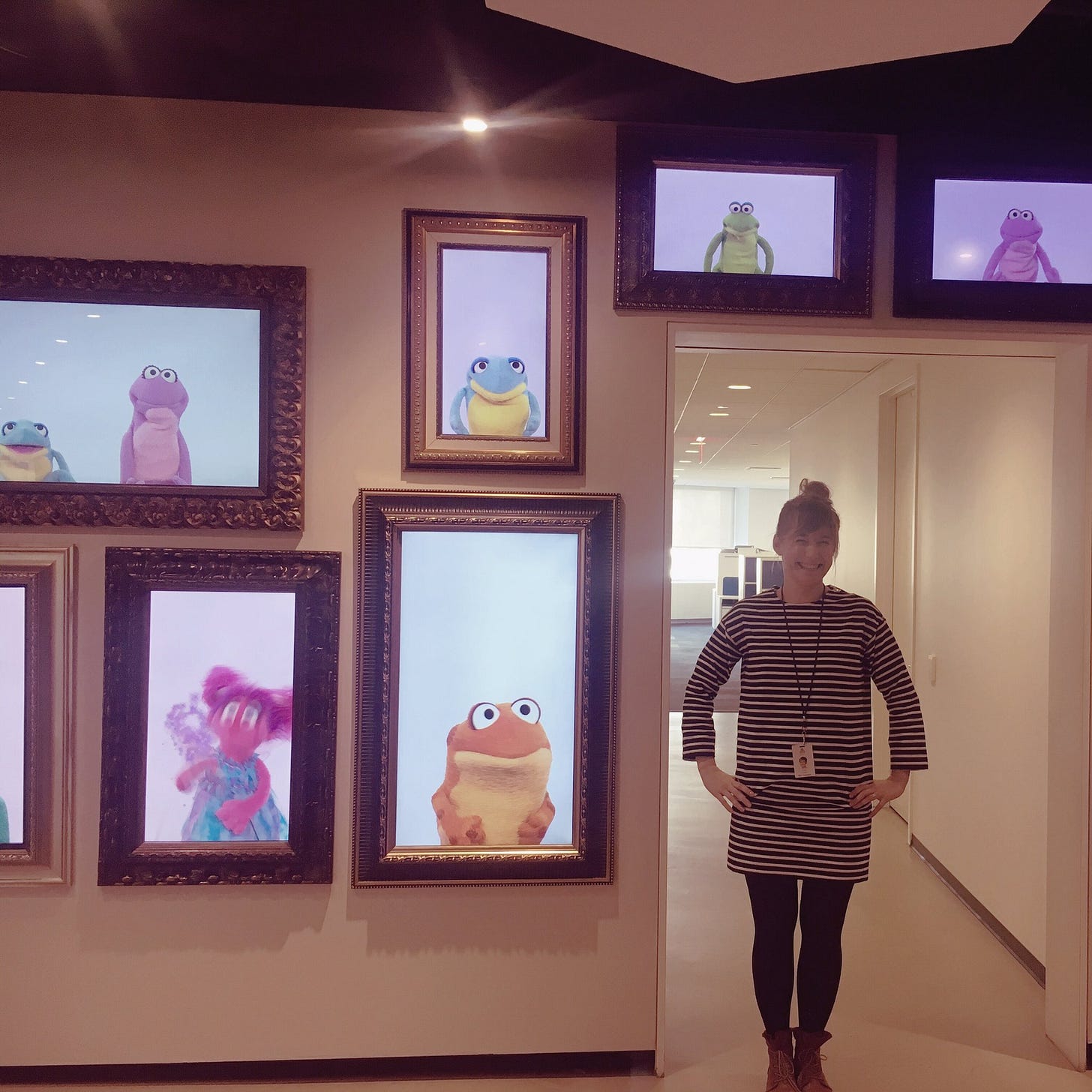No. 82 — How to get to Sesame Street ⫶ The Distractor ⫶ Where are the computers?
the spinach side of things
My name is Linda. I write a bi-weekly newsletter about computer science, childhood, and culture.
Sometimes, I go on YouTube and look through old Sesame Street videos. It's a funny feeling; I remember videos from my early childhood not as plots or curriculums but as shapes and feelings.
"What if you could create content for television that was both entertaining and instructive? What if it went down more like ice cream than spinach?" Joan Ganz Cooney asked famously in her "The Potential Uses of Television in Preschool Education" report.
I love this document so much. Whenever people debate children's screen time, I think about Joan Ganz Cooney. In 1966, she had a clue that the right group of people could improve TV - it didn't need to be infantilizing, full of hidden ads and mind-numbing gags. In today's words: tv doesn't need to be all commercial content optimized for the algorithm. It's all there: the production cadence, the academic excellence, the values and themes. Most importantly, the report and later the show take children seriously.
A part of Sesame Street I always admired was its commitment to research. Each episode went through rigorous testing—for each one-hour episode, roughly 40 program segments were created, which, in one season, amounts to 2400 distinct program segments, each addressed to a preassigned educational goal stated in terms of measurable outcomes. As a child watching, however, you don't see this spinach side of things; you only get the ice cream.
Last fall, James Bridle created a physical version of one of the research tools Sesame Street used at the Kunsthaus Zurich. (The piece is called The Distractor, and James' essay is also highly recommended.)
In the 1960s, the research team built a slide projector called "the distractor" that showed a new color image every seven and a half seconds. Images of buildings, rainbows, leaves, Escher drawings, and much more flickered through. An assistant monitored which screen the children were looking at, and new episodes of Sesame Street were only released when they scored more than 90% attention over the random images.
Bridle draws the lineage from The Distractor of the 1960s to the distraction of today:
"Edward Palmer and the Children's Television Workshop built the distractor in order to improve their real work. That work, as described by the New Yorker's film critic Renata Adler in 1972, was "to sell, by means of television, the rational, the humane, and the linear to little children." Google and its ilk have instead concentrated on improving the distractor, and the result is the triumph of the irrational, the inhumane, and the non-linear. And it has made them very rich indeed."
It's beautiful and complicated. When I look at the modern A/B tests, funnels, cohorts, and retention analyses in children's media, it's clear that some of them come from The Distractor. However, the original goal of nurturing children's development with intention and care is sidelined in favour of superficial engagement. I love how this lineage is visible in both the report and Bridle's work.
The pictures are from back in 2017 when I had a chance to visit Sesame Street, or at least the HQ.
Some other suggestions to learn more about Sesame research:
STREET GANG by Michael Davis. There is also a lovely documentary by the same name.
G IS FOR GROWING by Shalom M. Fisch & Rosemarie T. Truglio. The book is more research-oriented, with detailed descriptions of the practicalities of running the research. Pair with the original Writer's Notebook.
THE SESAME EFFECT by Charlotte F. Cole & June H. Lee. Short chapters on the international scope of Sesame Street.
Linked List
In computer science, a linked list is a linear collection of data elements whose order is not given by their physical placement in memory. But here it is a selection of things I’ve been reading lately.
My very favorite Sesame Street skits. Ars Technica has also compiled a list of the best science and math moments in Sesame Street.




Linda- It's been a minute since I looked at all things Sesame Street. So I appreciate this cheerful find. Hope you're well this week? Cheers, -Thalia